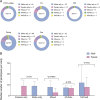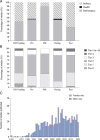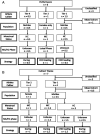Fueling the Female Athlete: Auditing Her Representation in Studies of Acute Carbohydrate Intake for Exercise
- PMID: 36251373
- PMCID: PMC9924969
- DOI: 10.1249/MSS.0000000000003056
Fueling the Female Athlete: Auditing Her Representation in Studies of Acute Carbohydrate Intake for Exercise
Abstract
Purpose: The aim of this audit was to assess the representation of female athletes within the literature that has led to current guidelines for carbohydrate (CHO) intake in the acute periods surrounding exercise and the quality of this research.
Methods: We conducted a standardized audit of research assessing CHO loading protocols, CHO mouth rinse, and CHO intake before, during, and after exercise.
Results: A total of 937 studies were identified in this audit. There were a total of 11,202 participants across these studies, with only ~11% being women. Most studies involved male-only cohorts (~79%), with a mere 38 studies (~4%) involving female-only cohorts and 14 studies (~2%) including a methodological design for comparison of sex-based responses. The frequent use of incorrect terminology surrounding menstrual status and the failure of most studies (~69%) to provide sufficient information on the menstrual status of participants suggests incomplete understanding and concern for female-specific considerations among researchers. Of the 197 studies that included women, only 13 (~7%) provided evidence of acceptable methodological control of ovarian hormones, and no study met all best-practice recommendations. Of these 13 studies, only half also provided sufficient information regarding the athletic caliber of participants. The topics that received such scrutiny were CHO loading protocols and CHO intake during exercise.
Conclusions: The literature that underpins the current guidelines for CHO intake in the acute periods around exercise is lacking in high-quality research that can contribute knowledge specific to the female athlete and sex-based differences. New research that considers ovarian hormones and sex-based differences is needed to ensure that the recommendations for acute CHO fueling provided to female athletes are evidence based.
Copyright © 2022 The Author(s). Published by Wolters Kluwer Health, Inc. on behalf of the American College of Sports Medicine.
Figures






References
-
- Tokyo 2020 first ever gender-balanced Olympic Games in history, record number of female competitors at Paralympic Games—Olympic News [date unknown]; [cited 2021 Dec 15]. Available from: https://olympics.com/ioc/news/tokyo-2020-first-ever-gender-balanced-olym....
-
- Costello JT, Bieuzen F, Bleakley CM. Where are all the female participants in sports and exercise medicine research? Eur J Sport Sci. 2014;14(8):847–51. - PubMed
-
- Cowley ES, Olenick AA, Mcnulty KL, Ross EZ. “Invisible sportswomen”: the sex data gap in sport and exercise science research. Women Sport Phys Act J. 2021;29(2):146–51.
Publication types
MeSH terms
Substances
LinkOut - more resources
Full Text Sources
Medical
Miscellaneous

